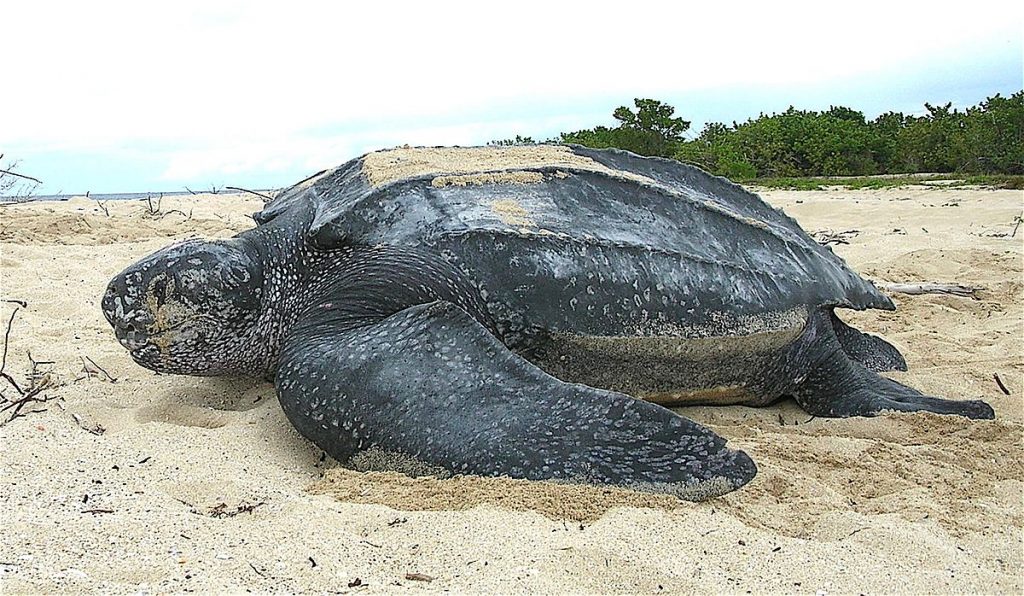
STATUS
Federal status: Endangered
POPULATION TREND
(-) Decreasing
RESTORATION
Difficult
FAMILY
Dermochelyidae, a family of many extinct turtle genera
RANGE
Global distribution within the tropical latitudes
Appearance
The leatherback sea turtle is the largest of all living turtles. It can be easily identified by its large size (500 to 2000 pounds) and its lack of scales or a hard shell. Instead, its top shell (carapace) is made of a thick layer of leathery, oily tissue.
Habitat
Leatherback sea turtles can be found in open ocean, where they dive deep to hunt for prey. Unlike other sea turtle species, the leatherback’s jaw and mouth are designed for eating soft-bodied, gelatinous prey such as jellyfish. They can dive deeper than any other species of sea turtle.
Threats
The Pacific leatherback sea turtle is the only remaining species in its family (Dermochelyidae). It is threatened by the destruction and degradation of nesting sites and egg collecting in Indonesia, Papua New Guinea, Solomon Islands, and Malaysia. Once in the open ocean, the Pacific leatherback sea turtle is threatened by legal and illegal fishing, fatal vessel-strikes, and the massive influx of plastic waste (which resembles jellyfish) into the Pacific Ocean. Ingestion of this waste can result in death or illness.
Conservation
Under the Federal Endangered Species Act in 2012, the National Marine Fisheries Service designated more than 16,000 square miles of California’s coastal waters as critical habitat to protect high-use foraging areas and primary prey species for the endangered Pacific leatherback sea turtle. The NOAA Fisheries Service has restricted commercial fishing in areas north of Hawaii and off the western coast of the United States because of concern over accidental bycatch of leatherbacks, and has proposed designating some areas as critical habitat.
Where can you spot it?
Leatherback sea turtles prefer open ocean and are difficult to observe.